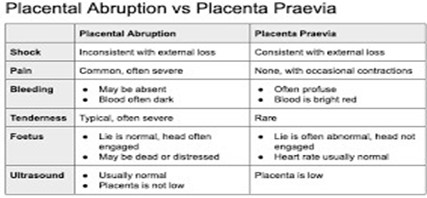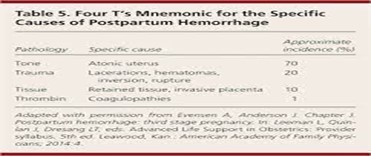The most prevalent clinical manifestation of abruptio placentae (as opposed to placenta previa) is:
Intense abdominal pain.
Uterine activity.
Bleeding
Cramping.
The Correct Answer is A

Nursing Test Bank
Naxlex Comprehensive Predictor Exams
Related Questions
Correct Answer is D
Explanation
The most common cause of excessive blood loss after childbirth is the failure of the uterine muscle to contract firmly, which is also known as uterine atony. If the uterus does not contract effectively after delivery, it cannot properly close off the blood vessels that were connected to the placenta, leading to heavy bleeding. Uterine atony can occur due to various factors, such as prolonged labor, multiple births, or the use of certain medications during labor.
Other causes of excessive blood loss after childbirth include retained placental fragments, vaginal or vulvar hematomas, or unrepaired lacerations of the vagina or cervix, but these are less common than uterine atony.

Correct Answer is B
Explanation
Methotrexate is a medication that can be used to treat an ectopic pregnancy by stopping the growth of the developing embryo and allowing the body to absorb it.
Surgery, such as salpingostomy or salpingectomy, may be required in some cases. Bedrest and suction D&C are not typically part of the treatment plan for an ectopic pregnancy.
A cesarean section is a surgical procedure used for delivering a baby during a full-term pregnancy and is not related to an ectopic pregnancy.
Whether you are a student looking to ace your exams or a practicing nurse seeking to enhance your expertise , our nursing education contents will empower you with the confidence and competence to make a difference in the lives of patients and become a respected leader in the healthcare field.
Visit Naxlex, invest in your future and unlock endless possibilities with our unparalleled nursing education contents today
Report Wrong Answer on the Current Question
Do you disagree with the answer? If yes, what is your expected answer? Explain.
Kindly be descriptive with the issue you are facing.
